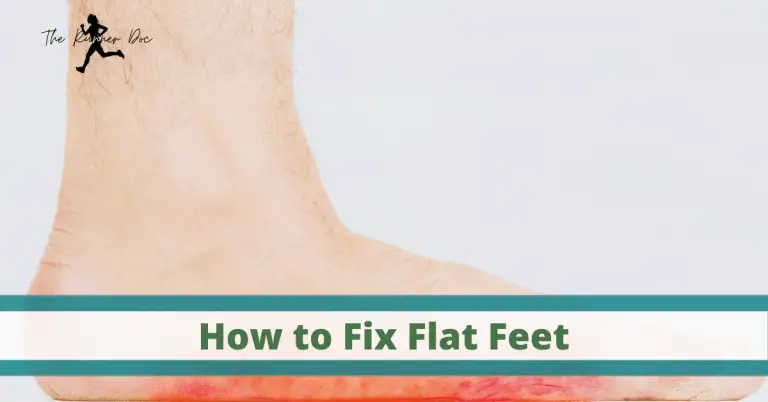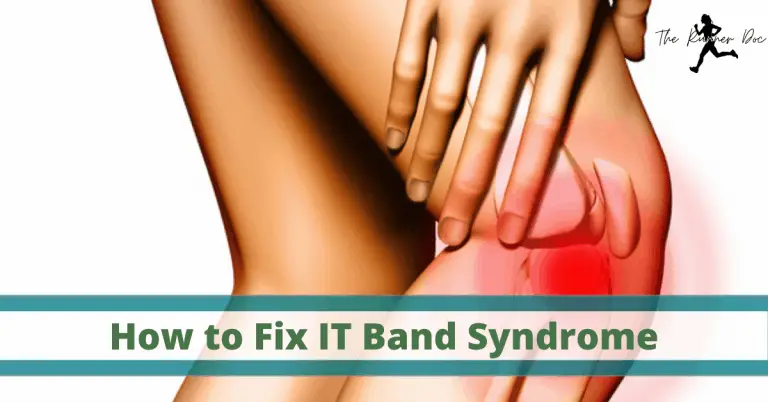How To Fix Posterior Tibial Tendon Dysfunction in Runners
How to Fix Posterior Tibial Tendinitis
Most people haven’t heard of this particular injury in runners. However, Posterior Tibial Tendon Dysfunction (PTTD) or Posterior tibial tendonitis OR even more accurately posterior tibial tendinopathy, is actually fairly common. It is one of the types of injury that causes heel pain in runners that I talked about recently.
In one of my recent articles about Flat Feet in Runners and how to fix it, I said there were many causes of flat feet. Well, today is not only one of those causes but it is the most common cause of acquired flat foot.

Side note on this one. Most people will call it posterior tibial tendonitis as this is the most common name for it. BUT, we are moving away from tendonitis as a term used and more toward tendinopathy or dysfunction due to lack of evidence that the tendons are injured due to inflammation. Which is what the “itis” means in the word.
Anatomy of Posterior Tibial Tendon Dysfunction
The purpose of the Posterior Tibial Tendon or PTT, is to stabilize your ankle. Which, let’s be honest, is a pretty big deal.
This tendon, while very important, is only about the size of a pencil. It starts in your instep or arch of your foot on the inside and then comes up behind your medial malleolus (the big bump of a bone on the inside of your ankle). It then attaches to the posterior tibialis muscle which is buried beneath your other calf muscles.

The posterior tibialis and its tendon, the posterior tibial tendon, apply pressure and help support and maintain the arch of your foot.
Whenever you run or walk your posterior tibial tendon locks your ankle into place, therefore when you push off the ground your foot stays in a nice, rigid, strong formation. This tendon/muscle complex also helps to invert your foot, move your toes inward.
What Causes Posterior Tibial Tendinitis in Runners?
This is one that is caused by most of the other usual suspects as well. Since it is a tendinopathy, anything that places more load on the tendon than it can handle is going to cause PTTD.
Training Error – research shows that training error is involved in 60-80% of tendon problems in runners. Training error, as discussed in other places, is any change in training including distance, speed, hill work, interval training etc. This should be a gradual process to allow the body to adapt. Unfortunately, due to the high number of tendon problems with this as the cause, it isn’t always the case.
Running Biomechanics – Running inherently doesn’t cause injury, biomechanics does. If you already have a flat foot or a tendency to overpronate you will have a greater load placed on the posterior tibialis. Get a gait analysis by a physical therapist to see how your biomechanics stack up!
Poor movement control/Muscle Weakness – Movement control and muscle weakness are, in my opinion, pretty much the same thing. Lack of control at the hip, knee, and ankle can all play a part in PTTD. Assess your single leg balance, single-leg heel raise, and single-leg squat. Things that you should look out for are the hip adducting (moving towards the middle), the knee collapsing in, and/or the ankle rolling in. These all demonstrate a motor control/muscle weakness that needs to be addressed. More than likely if any of these are happening you either have other aches and pains or you will.

How to See if You Have Posterior Tibial Tendon Dysfunction
There is a pretty simple test out there to see if your foot pain is cause by your posterior tibial tendon. Check out the video below for an example of how to do it!
Basically a single leg heel raise is the best test to determine posterior tibial tendonitis. If, when you do the heel raise, you have pain on the inside of your ankle or foot, you probably have an issue here. If severe enough you won’t be able to hardly get your heel up off of the ground.
Remember though, it is always good to get evaluated by a Physical Therapist instead of self-treating if you have significant pain or recurring pain. These are all just suggestions and tips to help prevent and maybe rehab a small ache.
Symptoms of Posterior Tibial Insertion Pain
The hallmark symptom of posterior tibial tendonitis is localized pain along the inside of your foot and ankle, sometimes stretching up a few inches onto your shin.
These can include:
- pain in the ankle that goes up into the calf
- painful when walking on tiptoes
- pain when going upstairs
- flattening of the arch
- inward rolling of the ankle
- swelling
- inability to do a single leg heel raise

Depending on how long you have been dealing with pain from posterior tendon dysfunction your location of pain can change. Typically in the beginning stages you will have more pain on the inside of the ankle where then tendon is located and will have minimal flattening of the arch.
However, as things progress, the arch may flatten more and the pain may shift to the outside of your ankle instead. This is due to the toes starting to rotate and point to the outside instead of straight forward when standing.
Am I making it worse?
Honestly, Yes.
Well, yes if you aren’t actively doing something about it to try to fix it.
If you have followed along with me on instagram for any amount of time you have probably heard me say that Movement is Medicine and Rest is NOT rehab. This is still true.
However, you do need the right type of movement for this particular issue.
Doing nothing and just trying to rest and then run trhough the pain is setting yourself up for a horrible cycle and even worse problems.
As I said before, if left untreated, posterior tibial tendinopathy can worsen and end up leaving you with a foot deformity of flat foot. This in turn will cause you to over-pronate when running and lead to even more injury.
So while you aren’t making it worse to continue to move per se…you do need to be trying to fix it.
THIS WILL NOT GO AWAY ON ITS OWN!!!
Physical Therapy Exercises to Fix Posterior Tibial Tendinopathy in Runners
Arch Doming
Standing Towel Scrunch
Resistance Band Plantarflexion
Resistance Band Inversion
Posterior Tibialis Heel Raises
Final Thoughts on Posterior Tib Tendinopathy
Early treatment is so important for this issue. If left untreated it can become a major issue and even require surgery. However, you can prevent Posterior Tibialis Tendon Dysfunction!
By following good training principles and working on the above exercises you can treat or even prevent the pain from starting in the first place!
Related Articles
How to Fix Achilles Tendinitis in Runners
How to Fix Plantar Fasciitis in Runners
How to Fix Flat Feet in Runners
Keep Running!!
AFFILIATE DISCLOSURE
As an Amazon Associate, I earn from qualifying purchases. This post may contain affiliate links. If you use these links to buy something we may earn a commission. The Site may contain links to affiliate websites, and we receive an affiliate commission for any purchases made by you on the affiliate website using such links.

How to Fix Posterior Tibial Tendonitis with Physical Therapy

Dr. Abby Siler, PT, DPT is a Physical Therapist with 10 years of experience in a variety of settings. She has spent the majority of her time treating athletes in orthopedic clinics and worker’s compensation cases. She is a runner herself for the past 15 years and a lifelong athlete. Dr. Abby loves to teach runners how to stay injury free and out of her clinic.








One Comment